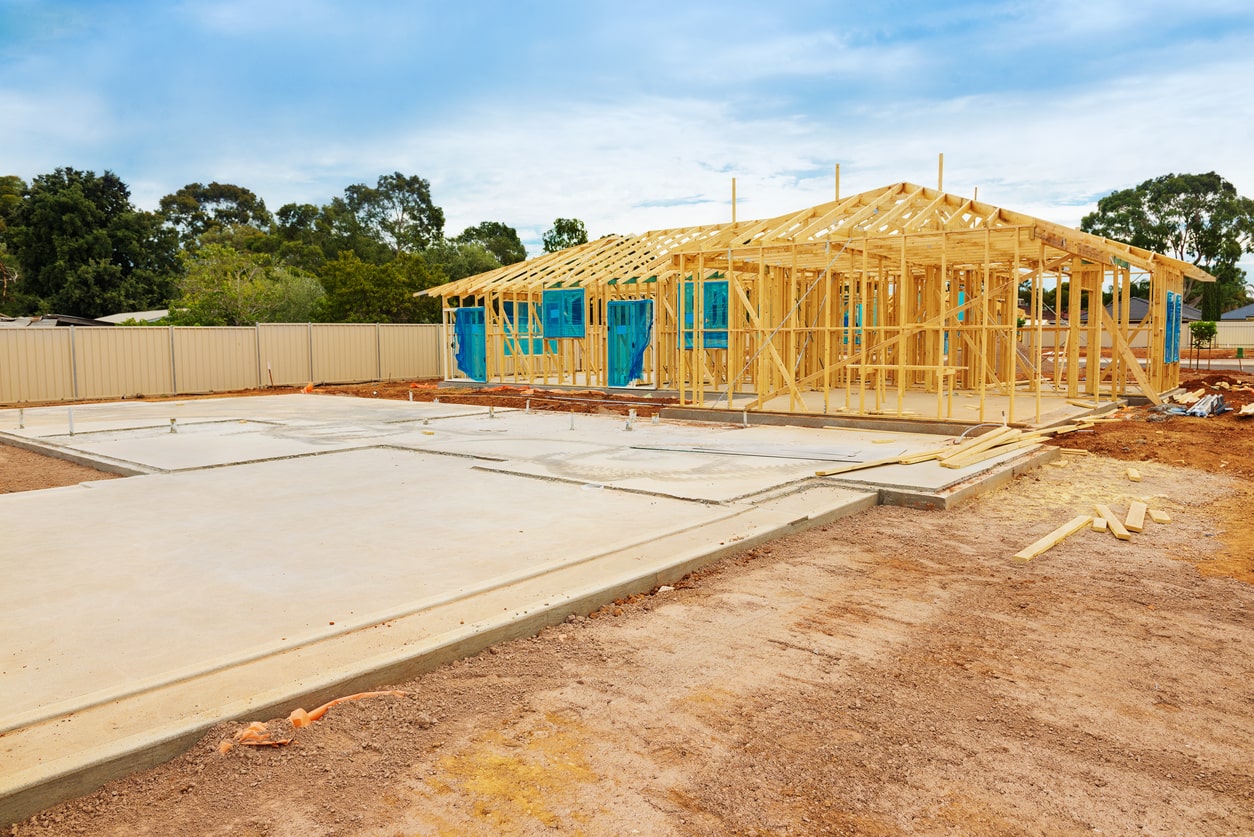When having slabs laid for homes and garages, formwork and concrete pumps are required. By working with the owner or manager we are able to organize absolutely everything, and our registered concreting team will do all that we can to ensure your planned project is completed on time. So if you need a house foundation slab or a new garage slab put down, our highly skilled crew can take on whatever the project is, and complete it on time, to our high standard.
Garage Slabs:
When getting garage slabs put in, getting a level, smooth finish is what we specialize in! As they are most commonly smaller jobs, they need to be smoothed over and finished with a purpose made trowel helicopter. Our team has years of experience laying down the perfect garage slab, so call us today.
Raft Slabs:
When these specific slabs are needed to be laid, we have to excavate the site first, and then pack in sand pads to get the correct height/level needed. Next plastic sheeting is put down and reinforcing steel is placed down as well. One of the most critical parts of any slab work, is boxing before the pour, so that all dimensions and measurements can be checked, and double checked according to your design plans.

Waffle Slabs:
In new housing estates, Waffle slabs have become more and more popular. They are less expensive to put down as they don’t have the same level of strength that the more traditional raft slabs have, but they have their place with volume builders in housing developments. At Concreters Brisbane, our registered concreters do all types of commercial and domestic concreting work.
What is a Concrete Slab?
A concrete slab is a fundamental structural element of modern buildings, consisting of a flat, horizontal surface made of cast concrete. It can be either ground-bearing or suspended, and is typically used to construct floors and ceilings. Concrete slabs can be reinforced with steel to increase their strength and durability, and are often abbreviated to “r.c.c. slab” or simply “r.c.” on technical drawings. Whether it’s a floor slab for a home or a reinforced concrete slab for a commercial building, these slabs form the backbone of many construction projects. A concrete slab floor is particularly versatile and beneficial due to its durability, ease of installation, and thermal mass properties that help regulate indoor temperatures.
Types of Concrete Slabs
Concrete slabs come in various types, each with its own unique characteristics and suitability for different sites and climate zones. The choice of concrete slab type depends on the specific site and climate conditions. Here are some common types of concrete slabs:
Waffle Slabs: These slabs are characterized by a grid pattern of ribs on the underside, providing excellent load distribution and reducing the amount of concrete needed. Waffle slabs are ideal for areas with reactive soils and are commonly used in residential construction.
Ribbed Slabs: Similar to waffle slabs, ribbed slabs have ribs running in one direction. They are often used in commercial buildings where large spans are required, offering strength and reducing the overall weight of the structure.
Suspended Slabs: These slabs are not in direct contact with the ground and are supported by columns or walls. Suspended slabs are commonly used in multi-storey buildings and can be designed to accommodate various load requirements.
Raft Slabs: Also known as mat slabs, these are thick, reinforced concrete slabs that cover the entire footprint of a building. Raft slabs are suitable for sites with poor soil conditions, providing a stable foundation that distributes the load evenly.
Slab-on-Grade: This is the most common type of concrete slab, poured directly on the ground. Slab-on-grade is ideal for level sites with good soil conditions and is often used for residential floors and foundations.
Precast Concrete Slabs: These slabs are manufactured off-site and then transported to the construction site. Precast concrete slabs offer high quality and uniformity, and they can be quickly installed, reducing construction time.
By understanding the different types of concrete slabs, you can choose the one that best suits your construction needs and site conditions.
Go to www.concretersbrisbane.com
